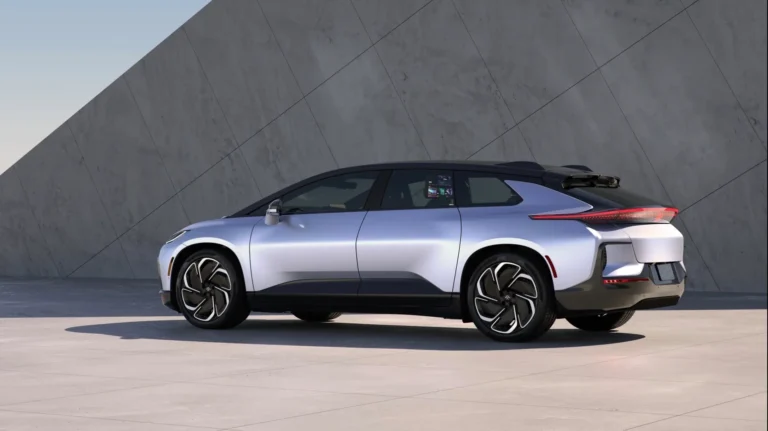
2025 Research Report Highlights 48V Low-Voltage Power Distribution Network Architecture and Supply Chain Evolution in Global and China Automotive Markets
The “48V Low-voltage Power Distribution Network (PDN) Architecture and Supply Chain Panorama Research Report, 2025″, now available on ResearchAndMarkets.com, explores the rapid development of 48V systems in the evolving landscape of electric vehicles (EVs). The report captures a critical inflection point: as the industry pivots toward intelligent, electrified, and autonomous mobility, 48V PDN architectures are gaining traction as a viable intermediary between legacy 12V systems and the high-voltage architectures powering today’s battery electric vehicles (BEVs).
From Mild Hybrids to BEVs: The Shift in 48V PDN Relevance
Historically, 48V PDN architectures have been primarily associated with mild hybrid electric vehicles (MHEVs). These systems, while offering efficiency improvements over conventional internal combustion engine (ICE) vehicles, have seen limited innovation. As a result, Chinese automakers in particular have shown little interest, curbing potential market expansion in this segment.
However, this dynamic is rapidly changing. BEVs and plug-in hybrid electric vehicles (PHEVs), which rely on high-voltage batteries (400V/800V), are increasingly incorporating a dedicated 48V low-voltage rail. This rail serves to power the vehicle’s entire electrical and electronic (E/E) system, acting as a bridge between high-performance requirements and energy efficiency.
The shift is driven by vehicles such as the Tesla Cybertruck and others adopting chassis-by-wire technologies and Level 3+ autonomous functions—both of which require robust, redundant, and scalable power architectures. As a result, OEM interest in 48V low-voltage PDN deployment is accelerating, and supply chain maturity is expected to follow quickly.
Supply Chain Maturation and Component Diversification
The 48V ecosystem is currently constrained by uneven component maturity across the supply chain. The report classifies the architecture into nine major categories and 20 subcategories, evaluating each for development priority and technical readiness.
Critical systems such as electronic power steering (EPS), brake-by-wire, and active suspensions are among the earliest adopters of 48V architecture due to their higher power demands and stringent safety requirements. For instance, the EPS landscape in China is evolving quickly, with rack-assisted (R-EPS) and dual-pinion (DP-EPS) systems gaining market share.
New energy vehicles (NEVs), especially those with heavier bodies and sophisticated autonomous features, demand higher output steering systems. Traditional hydraulic solutions fall short of these needs due to poor scalability and inefficient performance. In contrast, 48V electric steering systems offer better speed sensitivity, safety, and integration with autonomous controls.
Domestic Innovations: FAW Hongqi and Xiaomi Lead the Charge
Notable Chinese OEMs are advancing domestic 48V innovation. FAW Hongqi has developed a high-output (>20kN) R-EPS system that supports ASIL D-grade functional safety. The system is tailored for Level 2 and Level 3 autonomous features like automated parking, super cruise, and lane-keeping, and has already undergone vehicle-level testing.
Xiaomi Auto is also setting benchmarks with its intelligent chassis. The company is transitioning from 12V electro-hydraulic brakes to a 48V four-wheel electromechanical brake-by-wire system. It also developed a steer-by-wire system featuring redundancy in hand force simulators, tire actuators, and supporting electronics—designed to meet the highest safety standards.
These developments highlight how Chinese OEMs are bypassing legacy MHEV systems and directly adopting 48V in intelligent BEVs, aligning with long-term market trends and innovation cycles.
Power IC Demand Surges as Vehicles Re-architect ECUs
The ongoing reconfiguration of electronic control units (ECUs) in EVs is driving explosive demand for medium-voltage power ICs. While 12V systems typically use low-voltage MOSFETs, 48V platforms require components rated for higher thresholds. Fully charged 48V battery systems reach 60V, necessitating 80V–100V MOSFETs or even gallium nitride (GaN) FETs for efficiency and thermal performance.
The report notes that several semiconductor manufacturers have launched purpose-built 80V+ MOSFETs to meet this rising demand. These components are critical not just for energy delivery but also for supporting high-current loads such as zonal controllers, heating and cooling systems, audio modules, and active suspensions.
48V systems are also emerging as a “third voltage rail” within EVs, complementing the 12V and high-voltage (400V/800V) power architectures. DC-DC converters bridging 400V-to-48V are becoming standard in newer models, enabling load optimization and energy savings across vehicle domains.
Standardization: A Foundation for Mass Production
Standardization is essential for scaling 48V PDN solutions. The transition from 12V to 48V requires retooling validation, testing protocols, and component integration workflows. The industry began with standards such as LV148 and VDA320 and has since moved to ISO 21780:2020. Complementary frameworks like ISO 6469 and ISO 21498 ensure safety and compatibility across EV platforms.
As 48V systems proliferate, further contributions from ISO, SAE, and China’s GB standards are expected. These will help OEMs and Tier-1 suppliers align development roadmaps and secure regulatory compliance across global markets.
Use Cases and Strategic Rollouts: OEM and Supplier Perspectives
OEMs are actively piloting and integrating 48V architectures across platforms. The report provides detailed insights into 48V PDN deployment plans from 15 automakers, including:
- Tesla – leading in 48V integration for high-autonomy platforms
- Xiaomi Auto – utilizing 48V for full chassis-by-wire and advanced safety
- NIO, XPeng, BYD, Geely, Chery, FAW Hongqi – driving innovation within China’s NEV landscape
- Mercedes-Benz, BMW, Audi, Volvo, Lamborghini, GM – transitioning high-end models to 48V subsystems for performance, safety, and modularity
On the supply side, 23 component suppliers are featured, including Bosch, Valeo, STMicroelectronics, TDK, NXP, Vicor, onsemi, Innoscience, Gentherm, Aptiv, Littelfuse, and Eaton. These companies are actively developing 48V solutions for power distribution units, zonal controllers, battery management systems (BMS), electric fuses (eFuse), and wiring harnesses.
Strategic Outlook: 48V as a Launchpad for Future Automotive E/E Platforms
The report concludes that 48V low-voltage PDN architecture is set to become foundational for the next wave of high-performance BEVs. As OEMs pursue differentiated vehicle platforms with features such as 800V propulsion, redundant steering and braking, and AI-assisted autonomous driving, 48V will serve as a critical enabler.
However, the pace of mass adoption will largely depend on deployment timelines from leading OEMs. As component maturity improves and standardization stabilizes, the market is poised for rapid scaling.
Key Report Topics Include:
- Evolution and classification of 48V PDN architecture
- Comparative analysis with 12V systems
- Global and Chinese passenger car sales outlook (2024–2030)
- Component-level insights across chassis, cockpit, thermal, and power systems
- In-depth OEM and Tier-1 supplier deployment plans
- Standard system review (ISO, SAE, LV standards)
This report offers a comprehensive landscape for stakeholders—OEMs, suppliers, and investors—looking to understand the strategic role of 48V low-voltage architectures in future automotive E/E systems.






